Home » Posts tagged 'resilience.org' (Page 6)
Tag Archives: resilience.org
The Recent History of GDP Growth, CO2 Emissions, and Climate Policy Paralysis, All in One Table-Runner
The Recent History of GDP Growth, CO2 Emissions, and Climate Policy Paralysis, All in One Table-Runner

Note: I began designing this table-runner just before the COVID-19 pandemic blew up in the United States. In the time I have been embroidering it, rates of death and misery have soared while wealth generation and carbon emissions (the two subjects of this work) have ended their decades-long rise and have plummeted. A deadly virus is a terrible means of slowing greenhouse warming. Whenever we come out the other side of the pandemic, we must pursue a rapid, humane, ecologically sound, and guaranteed-effective course of action to drive greenhouse emissions down to zero. Here’s how. — P.G.C.

The color of money is the color of calamity
This table-runner illustrates, from left to right, the increase in atmospheric carbon dioxide concentration from 1946 to the present. Each year is represented by two adjacent stripes: one in gradually deepening shades of green representing that year’s U.S. gross domestic product (adjusted for inflation) and one in increasingly intense shades of yellow-orange-red, representing CO2 concentration.
There are nine shades for GDP and eleven for CO2, with shades indicating roughly equal intervals of increase in each. The shades of both types of stripes darken as the years go by, in accordance with the increases that occurred in both GDP and CO2. (For hi-res, zoomed-in images of the table-runner, see here.)
The shades of yellow-orange-red in the table-runner darken more and more rapidly as the years pass, illustrating how emissions of CO2 accelerated as industrial output and fossil-fuel use rose more rapidly throughout the world. The concentration of CO2 rose at an annual rate of about 0.8 ppm from 1945 to 1980; 1.5 ppm from 1980 to 1995; and 2.1 ppm from 1995 to 2019. (The United States accounted for almost 20 percent of the rise in atmospheric CO2 during those years.)
…click on the above link to read the rest of the article…
Review: Planet of the Humans
Review: Planet of the Humans
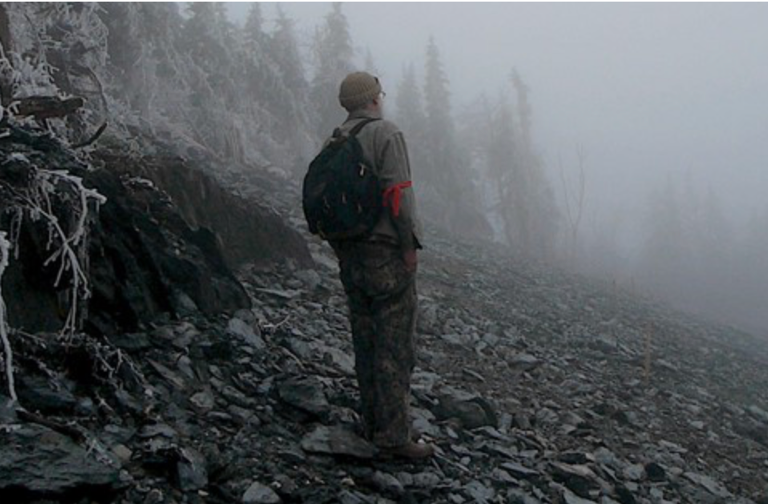
A few days ago, Emily Atkin posted a reaction to Michael Moore’s latest film, Planet of the Humans (directed and narrated by Jeff Gibbs), in which she began by admitting that she hadn’t seen the film yet. When writers take that approach, you know there’s already blood in the water. (She has since watched the film and written an actual review. Full disclosure: I’m in the film, included as one of the “good guys.” But I don’t intend to let that fact distort my comments in this review.)
The film is controversial because it makes two big claims: first, that renewable energy is a sham; second, that big environmental organizations—by promoting solar and wind power—have sold their souls to billionaire investors.
I feel fairly confident commenting on the first of these claims, regarding renewable energy, having spent a year working with David Fridley of Lawrence Berkeley National Laboratory to assess the prospects for a complete transition to solar and wind power.
We found that the transition to renewables is going far too slowly to make much of a difference during the crucial next couple of decades, and would be gobsmackingly expensive if we were to try replacing all fossil fuel use with solar and wind. We also found, as the film underscores again and again, that the intermittency of sunshine and wind is a real problem—one that can only be solved with energy storage (batteries, pumped hydro, or compressed air, all of which are costly in money and energy terms); or with source redundancy (building way more generation capacity than you’re likely to need at any one time, and connecting far-flung generators on a super-grid); or demand management (which entails adapting our behavior to using energy only when it’s available).
…click on the above link to read the rest of the article…
Pandemic Armchair Philosophy Blog 04-15-2020
Pandemic Armchair Philosophy Blog 04-15-2020

First, a recap. The Pandemic Armchair Philosophy Blog was born in the early months of the Covid-19 pandemic, and is designed to demonstrate philosophy’s practical side in these challenging times. It encourages readers–and not just professional philosophers–to utilize the hard-wired human propensities to think, imagine and create. It’s of the armchair variety because we are urged to stay inside these days, and because philosophizing can be done while sitting down.
I am a professional philosopher who has spent more than three decades in the American academy, nearly all of it introducing “the craft of thinking”[1] to pre-professional college students studying engineering, business and the sciences. I have benefitted as much from their practicality as I hope they have from my heartfelt insistence that philosophy’s craft matters for its own sake, as well as for its everyday applications regardless of occupation.
A viral pandemic shifts our sense of space and time. Hard-wrought plans and journeys that made such good sense just a few months ago are now open to uncertainty. Paths are detoured or blocked for who-knows how-long. What better time to step back and consider alternatives, to review those hidden assumptions about success, happiness and work-life balance, and to do some of the deep thinking that philosophy is famously known and occasionally ridiculed[2] for?
But how quickly have our lives and inboxes filled up! Video calls consume us from morning till night, punctuated by a bombardment of poems, podcasts, grocery-washing advice and funny clips from well-meaning friends and colleagues; not to mention the 24 hour news cycle. We shouldn’t begrudge the craving for social connections in times like these. Neither should we forget the importance of self-reflection. Philosophy helps us to step back and see the questions now lying all around in plain view.
…click on the above link to read the rest of the article…
What Might We Learn from COVID-19?
What Might We Learn from COVID-19?

COVID-19 has much to teach us about compassion, caring, gratitude, cooperation and truth. We need to thank our news media for keeping us informed, especially at this particular moment when falsity and division abound. Leaders supporting “fake news” and “alternative facts” have failed to address a pandemic in time to save lives. But there are few rewards in politics to avert danger ahead of full crisis, so to attenuate risk and defuse trouble before it explodes. Remedial structures set by Obama were removed by Trump, and we are paying a deadly price for his folly. The shortsightedness shown by our leadership boggles the mind at times. This problem of myopic decisions is what I propose to address.
I am an economist who has spent many years asking why economics has failed us so badly in social systems design. The matter reveals some very hard truths about how we see the world, and the behavior reinforced by our institutional system. Questions are more important than answers. Sanders says socialism may help; Biden disagrees. These are not the right questions. We need a larger view.
Many economists sidestep uncertainty by assuming complete knowledge, at the expense of understanding how we might deal with doubt in the face of everyday issues of risk, trust, opportunism, myopia, and disease. Economists’ preoccupation with certainty blinds us to our rational limits: I propose a notion of planning horizons as an alternative frame.
We make decisions, not on known outcomes but on imagined projections standing on theories of how things work. These projections have an ethical range called the ‘planning horizon.’ The better we understand the world the broader the reach of our anticipations. Conscience serves to measure how well we encompass social effects.
…click on the above link to read the rest of the article…
Energy Slaves: every American has somewhere between 200 and 8,000 energy slaves
Energy Slaves: every American has somewhere between 200 and 8,000 energy slaves
Source: https://www.homesthatfit.com/how-precious-is-energy-ask-your-slaves/
Preface. To give you an idea of what energy slaves are, consider what it would take to use human power to provide these:
Human Power Shower – Bang goes the theory – BBC One
And as the article below points out, if you tried to bicycle to power your TV, that free electricity is not free at all. Since food costs money it may even end up being more expensive produced by cycling than from the grid — you’ll end up paying for it all the same, just not in utility bills, but in food.
Slav, I. 2019. Why Powering A City With Bicycles Is Impossible. oiprice.com
Many people have taken a crack at estimating how much muscle power the energy contained within oil represents. Although there are different results, they all show how powerful oil is and how angry our descendants will be that we wasted it driving around in 4,000 pound cars for pleasure as they’re sawing wood and heaving hundred-pound sacks of grain onto horse-drawn wagons.
As I was writing my book “When Trucks Stop Running”, I came up with this (but didn’t include it since there are too many numbers): A class 8 truck can carry 50,000 pounds of goods 500 miles in one day. This would take 1,250 people carrying 40-pound backpacks walking 16 miles a day for 31 days. If the people ate 2,000 kcal of raw food a day, they’d burn 77.5 million kcal (and even more energy if the food is cooked). The truck needs 31 times less energy: at 7 mpg, that’s 71 gallons of diesel containing 35,000 kcal per gallon. Trucks carried over 13.182 billion tons of goods, equal to 329 million people each carrying 40 pound packs.
…click on the above link to read the rest of the article…
Nafeez Ahmed on Synchronous Failure and Post-Pandemic Systems Change
Nafeez Ahmed on Synchronous Failure and Post-Pandemic Systems Change

As the pandemic grows, governments and communities are not only struggling to minimize loss of life and protect our fragile healthcare and economic systems, they are wrestling with questions about how we can recover when this storm eventually passes.
But how many people are thinking about the larger context of this crisis? How many recognize that this pandemic—or some other shock to our interconnected and brittle global systems—could trigger a massive “phase change,” and utterly remake the world as we know it?
I spoke with investigative journalist and systems thinker Nafeez Ahmed about these critical questions.
Nafeez and I discuss frameworks for understanding how the pandemic relates to the larger, systemic environmental, energy, economic, and political challenges we face—including Thomas Homer-Dixon’s concept of “Synchronous Failure,” Joseph Tainter’s “Collapse of Complex Societies,” C.S. Holling’s “Adaptive Life Cycle,” and Naomi Klein’s “Shock Doctrine.” But far from being an abstract, academic exploration, Nafeez and I explore the real-world implications of these forces at play, and provide a call-to-action when we re-enter a world that has been transformed by COVID-19.
Please give it a watch or if you’d rather give it a listen on your favorite podcasting app, we’ve also released the interview on Crazy Town. Oh, and share with your friends and loved ones if you find it worth a listen.
The Pandemic Armchair Philosophy Blog, 03.26.2020
The Pandemic Armchair Philosophy Blog, 03.26.2020

It may sound paradoxical, but philosophers have proved useful in times of collapse and rebuilding. Some of the greatest works in philosophy–at least in terms of their longevity and influence–were written in and during such times.1 (More on this below.) Alfred North Whitehead, one of those philosophers writing in the early 20th century, put it this way:
Systems, scientific and philosophic, come and go. Each method of understanding is at length exhausted. In its prime each system is success: in its decay it is an obstructive nuisance. The transitions to new fruitfulness of understanding are achieved by recurrence to the utmost depths of intuition for the refreshment of imagination. In the end–though there is no end–what is being achieved, is width of view, issuing in greater opportunities. (Adventures in Ideas, 1933, pg. 159)
The creation of this “width of view”–thanks to our Homo sapiens hardware–is open to most of us. The paragraphs below were written in response to a colleague’s question about how the COVID-19 pandemic helps us better understand climate change and the many other ongoing, cascading, planet-sized crises. I offer them, in part, because I don’t know what else to do in this Moment (as opposed to this moment), and because I wrote them while sitting in a chair. More importantly, they issue mostly from my experiences and observations, not from a particular method of analysis or formal system of logic. And it is my hope that they will inspire others with Whitehead’s optimism that the work of the imagination can issue-in greater opportunities.
…click on the above link to read the rest of the article…
How Does Pandemic Change the Big Picture?
How Does Pandemic Change the Big Picture?

As of 2019, the Big Picture for humanity was approximately as follows. Homo sapiens (that’s us), a big-brained bipedal mammal, had spent the Pleistocene epoch (from 2.5 million years ago until 12,000 years ago) developing its ability to control fire, talk, paint pictures, play bone flutes, and make tools and clothes. Language dramatically enhanced our sociality and helped enable us to invade and inhabit every continent except Antarctica. During the Holocene epoch (the last 12,000 years), we started living in permanent settlements, developed agriculture, and built state societies with kings, slavery, economic inequality, full-time division of labor, money, religions, and armies. The Anthropocene epoch (more of a brief interlude, really) dawned only a couple of centuries ago as we humans started using fossil fuels, which empowered us dramatically to grow our population and per capita consumption rates, mechanize production and transport, and basically dominate the entire planet. The mechanization of agriculture, by making the landed peasantry redundant, led to mass urbanization and quickly pumped up the size of the middle class. However, the use of fossil fuels destabilized the global climate, while also vastly increasing existing problems like pollution, resource depletion, and the destruction of habitat for most wild creatures. In addition, over the past few decades we learned how to use debt to transfer consumption from the future to the present, based on the risky assumption that the economy will continue to grow forever, thereby enabling future generations to pay for the lifestyle we enjoy now.
In short, the Big Picture was one of ever-increasing power and peril. Suddenly it has changed. A pattern of furious economic growth, consistent over many decades since the dawn of the Anthropocene (with only occasional interruptions, primarily consisting of the Great Depression and two World Wars), has slammed precipitously into the wall of pandemic (un)preparedness. In an effort to limit mortality from the novel coronavirus, governments around the world have put their economies into a state of suspended animation, telling most workers to stay home and to avoid direct contact with others.
…click on the above link to read the rest of the article…
Embracing Interconnectedness
Embracing Interconnectedness
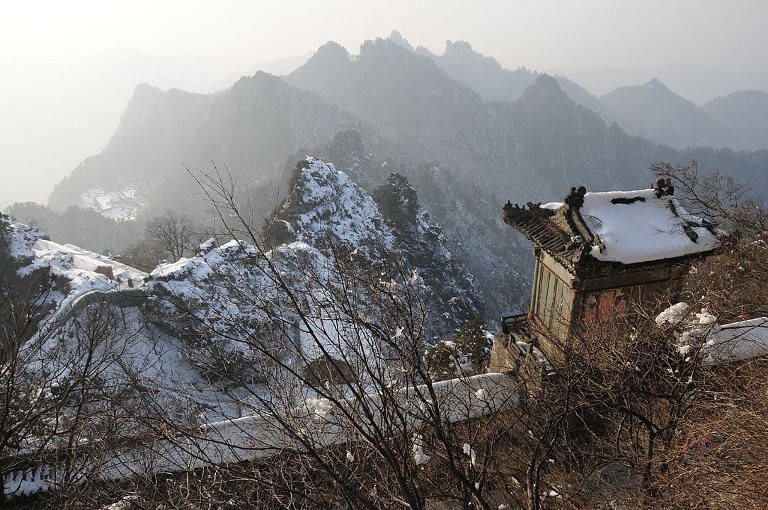
Ed. note: This piece is a response to the Toward a Great Ethics Transition Forum on the Great Transition Initiative website.
It is of the utmost importance to establish the right framework of values for the deep transformation of civilization that is needed. As I have laid out in The Patterning Instinct, different cultures have constructed vastly different systems of values, and those values have shaped history. Similarly, the values we choose today as a society will shape our future. The stakes for getting it right could hardly be higher.1
In recent decades, neoliberalism has established a dominant pseudo-ethical regime based on a flawed notion of untrammeled, market-based individual freedom. Our overriding task is to substitute this with an ethic of shared responsibility and interdependence. We need a solid, rigorous foundation for this ethic. Where do we find it?
Too much of the conversation on ethics focuses on binaries. But binaries simply encourage different camps to put up barricades against each other. We must move beyond binaries to a truly integrated ethical framework—one that incorporates the rational and intuitive, the scientific and the spiritual.
Fortunately, in recent decades, the combination of complexity science, evolutionary biology, cognitive science, and systems thinking has given us a platform for the kind of integration we need. Recognizing an evolutionary basis for values does not mean falling prey to the reductionist determinism of outmoded theorists such as Richard Dawkins, whose “selfish gene” myth has been superseded by modern evolutionary biology.2
The major evolutionary transitions of life on Earth have, in fact, been characterized by increases in cooperation, the most recent of which was the emergence of hominids. Facing perilous savannah conditions, our ancestors discovered that, through collaboration, they could protect and feed themselves far more effectively.
…click on the above link to read the rest of the article…
Power, the Acceleration of Cultural Evolution, and Our Best Hope for Survival
Power, the Acceleration of Cultural Evolution, and Our Best Hope for Survival
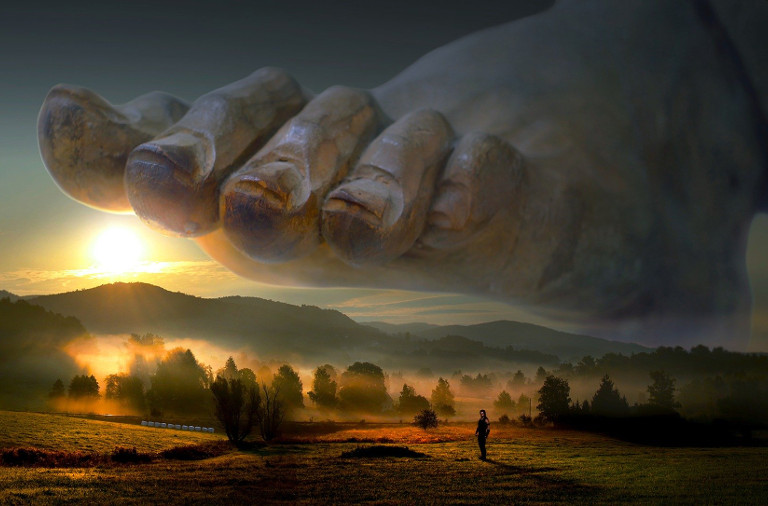
These days I’m deep in the process of writing a book on power—both physical power (humanity’s power over nature) and social power (the power of some people over others). The book’s first few chapters explore the historical process by which we developed our currently awesome powers, starting with control of fire, simple stone tools, and language. Once we had these, the pace of human empowerment picked up dramatically. We didn’t have to wait for biological evolution to slowly deliver improved organs; cultural evolution could rapidly supply new ideas, behaviors, and tools—which often took the forms of prosthetic organs (such as clothing and weapons) that enabled us to take over habitat from other creatures.
While the pace of cultural evolution was much faster than that of biological evolution, major cultural innovations like the domestication of plants and animals, the creation of the first states, and the emergence of the earliest empires were still spaced thousands of years apart. However, our sudden access to the storable, portable, and concentrated energy of fossil fuels, starting roughly in the 19th century, sped up cultural evolution to the point where disruptive cultural innovations began to be separated by mere decades, sometimes just years.
One of the factors driving cultural evolution is the rebounding interaction of technology and language. Writing, the alphabet, printing, the telegraph, telephone, radio, television, internet, and social media have sped up and spatially expanded human interaction, giving us the ability to cooperate in ever larger groups, in effect granting us expanding power over space and time.
…click on the above link to read the rest of the article…
David Hughes’ Shale Reality Check 2019
David Hughes’ Shale Reality Check 2019

1.9 million. 13 trillion. 10 billion. These are the numbers that jumped off the page when I read PCI Fellow David Hughes’s latest “shale reality check” report on the U.S. government’s forecasts of domestic oil and gas production. To elaborate, these forecasts mean that by 2050:
- 9 million new oil and gas wells will need to be drilled;
- $13 trillion will need to be spent to drill all those wells; and
- 10 billion barrels of tight oil production will be “missing” from shale plays to meet the reference case forecast for cumulative production.
These are just some of the crazy numbers behind the Energy Information Administration’s (EIA) latest forecasts for U.S. oil and gas production through 2050.
Every year, the EIA releases a new forecasts of domestic energy in the coming decades. These forecasts—specifically the “reference case”—are virtually taken to the bank by policymakers, investors, and the mainstream media as the most likely scenario of future production, consumption, and prices.
This despite the fact that they are very often wrong and vary tremendously from year to year. Or the fact that for several years now David Hughes has published “reality checks” on the forecasts of tight oil and shale gas production (extracted through “fracking”) found in the Annual Energy Outlook—reality checks that have consistently shown that the EIA’s projections are, to be polite, extremely optimistic.
Hughes’s latest report evaluates the EIA’s reference case forecasts for the top tight oil and shale gas plays (accounting for roughly 90% of production) against:
- current and historical production;
- the number of producing wells;
- the decline rates for wells and fields;
- the distribution of wells in terms of their quality;
- definition of the relatively limited “sweet spot” areas in each play; and
- the projected number of wells, well density, and money required to meet the EIA’s forecasts.
…click on the above link to read the rest of the article…
Abandon All Hope: Moving Toward an Existentialist Environmentalism
Abandon All Hope: Moving Toward an Existentialist Environmentalism

As the Earth’s ecological systems upon which we depend accelerate in their slouch towards Bethlehem, our society faces an existential crisis. The effects of climate change are far direr than we initially expected. Global atmospheric carbon dioxide concentrations have risen to 415 ppm for the first time in over three million years. The recent Intergovernmental Panel on Climate Change’s Special Report on Global Warming of 1.5°C describes that we face an increase in global average temperatures of 1.5 degrees C as soon as 2040. Furthermore, the two degrees of warming that scientists widely argue is the final major threshold before permanent, large-scale climatic shifts leading to ecological collapse, is no longer some far-off possibility or hyperbolic fear-mongering, but an imminent reality. The future we face in this new Earth is marked ever more frequent and intense fire and flooding, famine and disease, droughts and storms.
Similarly, compounded by decreasing habitat availability from deforestation, overfishing, and resource overuse, climatic shifts are already being accompanied by staggering and consistent losses in biodiversity. Published last month, the Intergovernmental Science-Policy Platform on Biodiversity and Ecosystem Services’ Global Assessment Report concluded that the second-fastest mass extinction event in planetary history is underway; the current rate of extinction is 100 to 1000 times greater than historical background rates. Over one million species are at risk of extinction within the next few decades.
As they perceive the horsemen beginning to saddle up their mounts, many of my friends and colleagues in the environmental community have succumbed to anxiety, if not despondency. It is all too easy to become overwhelmed and unable to make a decision on how to proceed given the enormity of the problem and the lateness of the hour. Indeed, given their scale, global challenges like climate change and biodiversity loss have been called hyperobjects which humans cannot comprehend despite their pervasive effects that are and will be experienced by everyone in some way.
…click on the above link to read the rest of the article…
Excerpt from The Patterning Instinct: Can We Transform Our Society for a Flourishing Future?
Excerpt from The Patterning Instinct: Can We Transform Our Society for a Flourishing Future?

Ed. note: Excerpted from the final two chapters of Jeremy Lent’s award-winning book, The Patterning Instinct: A Cultural History of Humanity’s Search for Meaning, (Prometheus, 2017) which explores the different ways cultures have patterned meaning into the cosmos, and reveals how various worldviews arose and shaped the course of history. The book uncovers the hidden foundations of our modern unsustainable worldview, and offers a potential vision for a more harmonious future. Jeremy is founder of the nonprofit Liology Institute, dedicated to fostering an integrated worldview that could enable humanity to flourish sustainably on the earth. More info: jeremylent.com.
Ideological lock-in
The reasons our civilization continues hurtling towards a precipice are multi-layered. There are some readily identifiable factors; underpinning these are certain structural characteristics of our global system that lock in our current momentum; and underlying these are cognitive frames – mostly concealed – that form the basis for our collective behavior. Each of these layers must be addressed to make a meaningful course correction.
The easily identifiable forces propelling humanity on its current course are the special interests that gain financially and politically – at least, in the short-term – from continued economic growth and use of fossil fuels. Hundreds of millions of dollars are spent annually in political lobbying and funding for those who deny the threat of anthropogenic climate change. They currently exert enough power over the U.S. legislative process to thwart meaningful legislation at the national level.
However, even without these special interests, some structural characteristics of our global system make it very difficult to change direction. One of these is known as technological lock-in: the fact that, once a technology is widely adopted, an infrastructure is built up around it, making change prohibitively expensive.
…click on the above link to read the rest of the article…
US Oil Exploration Drops by 95 Percent
US Oil Exploration Drops by 95 Percent
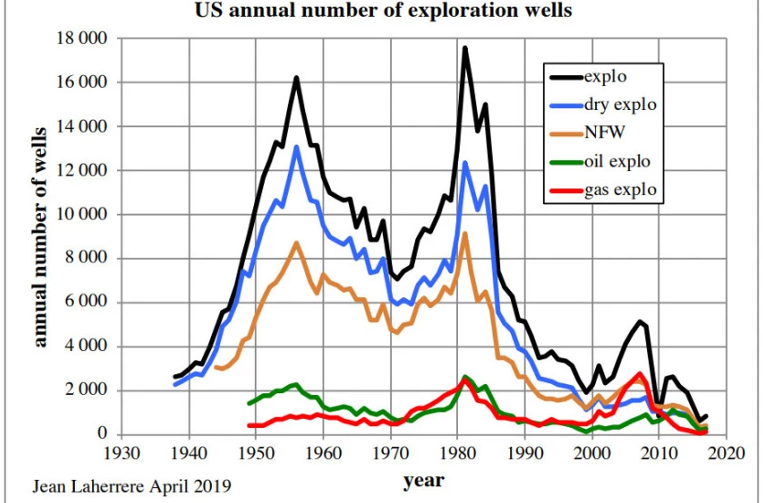
It is well known that oil discoveries are in continuous decline worldwide in spite of ever-increasing investments. What is less known, however, is that spending on oil exploration is fast dropping in the United States. Exploratory drilling has been decreasing year after year and now stands at only five percent of its 1981 peak. In other words, once the currently producing shale oil wells are gone, there won’t be much to take their place.

According to figures derived from US Energy Information Agency (EIA) data by French oil geologist Jean Laherrère, oil exploration has already peaked twice in the United States. The first time was in the mid-1950s, with just over 16,000 wells drilled in a single year. The second major peak dates back to 1981, with 17,573 exploration wells. This number fell to only 847 in 2017.

Another even more revealing phenomenon is the decrease in NFWs. New field wildcats are exploration wells drilled in areas that have never produced oil, as opposed to wells drilled simply to help better delineate already known oil sectors (shown as red and greenlines in the graph). NFWs also declined by 95 percent, from 9,151 in 1981 to just 450 in 2017. According to Laherrère, this means that the United States have been almost entirely explored for oil and gas since 1859 and that few sites are worth drilling anymore. “There are only a few unexplored areas left offshore”, he notes.
In comparison, the number of operating wells (used to pump oil from previously known fields) was 646,626 in 1985, 597,281 in 2014, and 560,996 in 2017. However, nearly 400,000 of these wells are very old and produce at a marginal rate – fewer than 15 barrels a day and sometimes as little as one. They are described as marginal wells in the graph above.
…click on the above link to read the rest of the article…
Growing a Revolution: Review
Growing a Revolution: Review
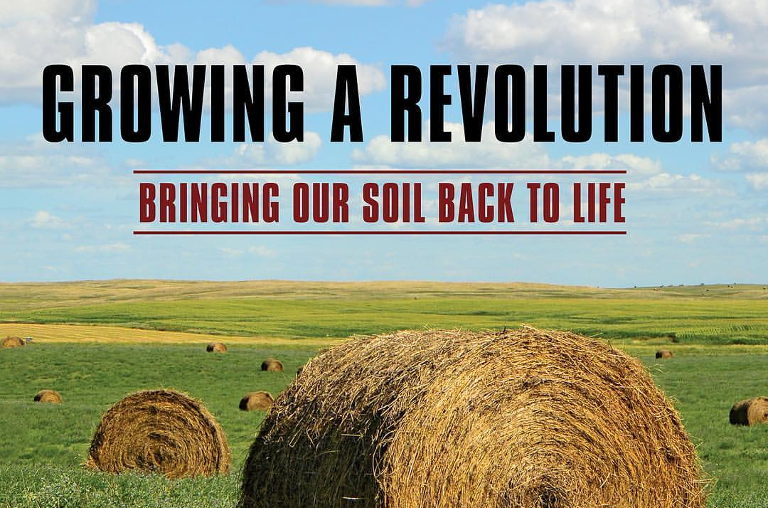
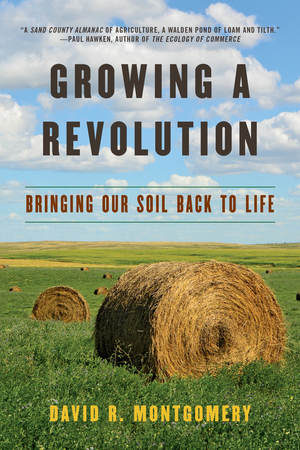
Growing a Revolution: bringing our soil back to life
by David R. Montgomery
W. Norton & Company 321 pages
$19.58 hardcover, $11.52 paperback, $9.88 Kindle, $26.29 audio CD
Resilience.org asked me to review this book, probably because I did a multibook review five years ago in which I compared four books on sustainable gardening and farming.
Growing a Revolution, unlike the four books I reviewed then, is not really a how-to book. While it might well be useful to farmers, its primary purpose is to show the many benefits of changed agricultural practices, and it includes talk about policy changes that would be helpful.
Montgomery is a geologist. He has written four previous books, mostly with an ecological theme. Here he looks at what he calls “conservation agriculture,” which really boils down to three principles:
- Do not till the soil.
- Use cover crops or mulch; keep the soil covered.
- Rotate crops.
He takes a global journey, visiting practitioners of this type of farming in North and South Dakota, Nebraska, Ghana, Costa Rica, Ohio and Pennsylvania. Their circumstances differed considerably as did their land; what they had in common is that they used all three of these practices. It was several times emphasized that one of these (for example, no-till) would not likely reap the benefits of using all three.
In the first paragraph of the preface, he says, “Since the dawn of agriculture, society after society faded from memory after degrading their soil. But we need not repeat this history on a global scale. For while the problem of soil degradation remains the least recognized of the pressing crises humanity faces, it is also one of the most solvable. Are you ready for an optimistic book about the environment?”
…click on the above link to read the rest of the article…



